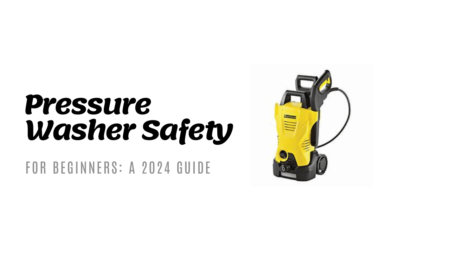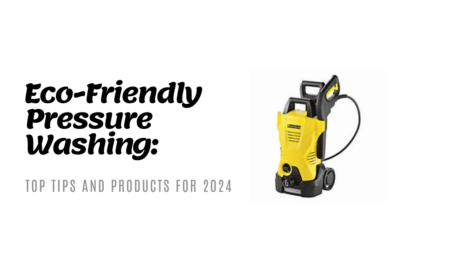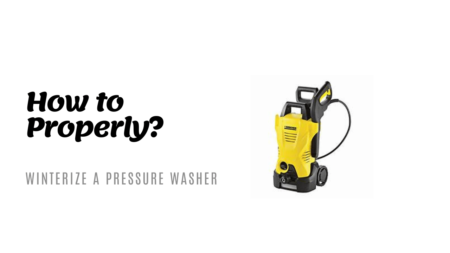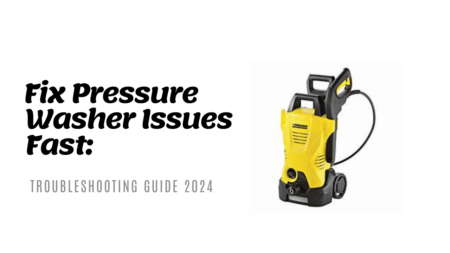
A pressure washer is a versatile and powerful tool for outdoor cleaning, but it relies on sufficient water pressure for optimal performance. In some cases, the water pressure provided by the municipal supply may be insufficient, leading to lackluster results. However, by employing various methods and tips for boosting water pressure for your Hart pressure washer, you can enhance its effectiveness. This comprehensive guide will provide detailed explanations and additional suggestions for increasing water pressure, ensuring that you maximize the potential of your washer.
Understanding Water Pressure and Flow Rate
Before delving into methods for increasing water pressure, it is crucial to comprehend the concepts of water pressure and flow rate. Water pressure is the force exerted by water as it moves through a pipe, measured in pounds per square inch (psi). Flow rate refers to the volume of water passing through the pipe in a given time, typically measured in gallons per minute (GPM). Both factors are vital in determining the performance of your pressure washer.
To measure water pressure accurately, consider using a pressure gauge at various points in your water supply system. Ideally, pressure washers operate best within a range of 40 to 60 psi. Additionally, the flow rate requirements typically range from 1.5 to 4 GPM.
Tips to Boost Water Pressure
Check the Water Supply System
Before using your Hart pressure washer, thoroughly inspect the water supply system to ensure optimal functionality. Check valves, pipes, and fittings for any signs of damage, leaks, or blockages that might impede water pressure. Replace or repair any faulty components to guarantee a consistent water flow. Installing a pressure regulator can help maintain steady water pressure.
Clean Inlet Filters
Most washers are equipped with inlet filters to prevent debris from entering the pump. Over time, these filters can become clogged, restricting water flow and reducing pressure. Cleaning and removing any obstructions from the filters regularly will promote an uninterrupted water supply and improve pressure.
Increase the Hose Diameter.
By using a hose with a larger diameter, you can allow more water to flow through, effectively increasing water pressure. Ensure that the diameter upgrade is compatible with your pressure washer model, considering its maximum flow rate capacity. Upgrading to a larger-diameter hose will reduce friction loss and optimize water pressure.
Optimize Hose Length
The length of the hose can impact water pressure due to friction loss. Minimize the length of the hose, positioning your washer as close to the water source as possible. This reduces the distance the water has to travel, minimizing pressure loss and maximizing performance.
Remove Kinks and Tangles
Kinks, twists, or sharp bends in the hose can restrict water flow and decrease water pressure. Before starting the washer, thoroughly inspect the hose and ensure it is free from kinks or tangles. Straighten the hose and eliminate any sharp bends, allowing for unhindered water flow and optimal pressure.
Adjust the Pressure Washer’s Unloader Valve
The unloader valve regulates the water pressure within the pressure washer. Depending on the model, you may have the option to adjust the pressure. Consult the manufacturer’s instructions to ensure proper adjustment. Be cautious not to increase the pressure excessively, as it could damage the pump or the surface being cleaned. Adjust the unloader valve carefully to find the optimal settings for your specific cleaning tasks.
Utilizing Additional Tools
Pressure Washer Pump Upgrade
Consider upgrading your pressure washer pump if low water pressure persists despite other efforts. Consulting a professional or the manufacturer can help determine if upgrading the pump is both feasible and beneficial for your specific model. A more powerful pump can increase water pressure and significantly enhance overall cleaning performance.
Installing a Pressure Booster System
For consistent low water pressure issues, installing a pressure booster system can be a reliable solution. These systems work by boosting water flow before it reaches the washer. Consult a professional plumber to assess your specific needs and install a pressure booster system tailored to your requirements. This ensures a consistent and adequate water supply for your machine.
Using a Water Broom
Water brooms are attachments fitted with multiple spray nozzles, designed to cover larger areas quickly. They distribute water evenly, reducing the reliance on exceptionally high water pressure. Even with moderate water pressure, water brooms allow you to achieve satisfactory cleaning results. This tool is particularly helpful when cleaning large flat surfaces, such as driveways or decks.
Using a Surface Cleaner
Similar to water brooms, surface cleaners use rotating nozzles to clean large surfaces efficiently. This design ensures effective and consistent cleaning even with moderately lower water pressures. Surface cleaners are ideal for tasks such as cleaning concrete or brick surfaces, effectively removing dirt and grime.
Water Source Considerations:
Connecting to a Dedicated Water Supply
When using a pressure washer, it is essential to have a reliable and dedicated water supply to ensure consistent water pressure and optimal performance. Connecting your pressure washer to a dedicated water supply means having a hose specifically reserved for the pressure washer’s use. This ensures that the pressure washer gets steady and uninterrupted high-pressure water during operation.
Rainwater Harvesting as an Alternative Source
Rainwater harvesting involves collecting and storing rainwater for various uses, including outdoor cleaning tasks like pressure washer performance. It is an eco-friendly and sustainable approach that reduces the reliance on municipal water supplies for non-potable purposes.
Using a Water Storage Tank for Consistent Pressure
If your pressure washer consistently experiences low water pressure from the main supply, using a water storage tank can be a practical solution. A water storage tank stores water from the main supply and maintains a constant pressure, providing a steady water pressure enhancement to the pressure washer.
To set up a water storage tank for your pressure washer, you’ll need to install a pressure tank and a pump. The pump draws water from the storage tank and pressurizes it, ensuring a steady and consistent water pressure upgrade to the pressure washer. A pressure switch controls the pump’s operation, automatically turning it on and off to maintain the desired pressure level in the tank.
Before installing a water storage tank, check local regulations and obtain any necessary permits, as some areas may have specific guidelines for water storage and usage. Additionally, consult with a professional plumber to ensure proper installation and avoid any potential issues.
Conclusion
By implementing these detailed methods and Hart pressure washer tips to boost water pressure, you can significantly enhance its cleaning performance. Regular maintenance, upgrades, and utilizing additional tools will allow you to achieve optimal results, even in situations where water pressure from the municipal supply is inadequate. Prioritizing safety, following manufacturer instructions, and consulting professionals when necessary are all essential steps. With improved water pressure, it increases water flow and becomes more effective and efficient in tackling a wide range of outdoor cleaning tasks.
Frequently Asked Questions
How do I know if my pressure washer is experiencing low water pressure?
Low water pressure in your pressure washer can be indicated by reduced cleaning performance, longer cleaning times, and weak spray output. If you notice these signs, it may be an indication of insufficient water pressure.
Can I use any pressure gauge to measure water pressure in my water supply system?
While most pressure gauges will work, it’s essential to choose one with a suitable pressure range. Opt for a pressure gauge that can measure the pressure within the 40 to 60 psi range, which is ideal for pressure washers.
Is it safe to adjust the unloader valve on my pressure washer to increase water pressure?
Yes, you can adjust the unloader valve to optimize water pressure, but it should be done with caution. Read your pressure washer’s manual to understand the proper adjustment procedure and avoid setting the pressure too high, as it could damage the pump or surfaces you are cleaning.
Will upgrade the pump in my pressure washer increase water pressure significantly?
Upgrading the pump in your pressure washer can increase water pressure, but the extent of the improvement depends on the model and the original pump’s specifications. Consult the manufacturer or a professional to determine the potential benefits of a pump upgrade for your specific pressure washer.
Can I use a water broom or surface cleaner with a pressure washer?
Yes, water brooms and surface cleaners are typically compatible with most pressure washer models. However, it’s essential to check if the specific attachment is compatible with your pressure washer’s PSI and GPM ratings before use.
Read Related Queries:
Hart 2500 PSI Electric Pressure Washer Review
Using Detergents and Cleaners with Your Hart Pressure Washer
Tips for Storing Your Hart Pressure Washer During Off-Seasons




![Pressure Washing Regulations: What You Need to Know [Updated 2024]](https://pressurwasher.com/wp-content/uploads/2024/05/Minimalist-Tutorial-Event-YouTube-Thumbnail-2024-05-31T224409.854-450x253.png)
![Ultimate Guide to Pressure Washer Maintenance [2024 Edition]](https://pressurwasher.com/wp-content/uploads/2024/05/Minimalist-Tutorial-Event-YouTube-Thumbnail-2024-05-30T230638.695-450x253.png)